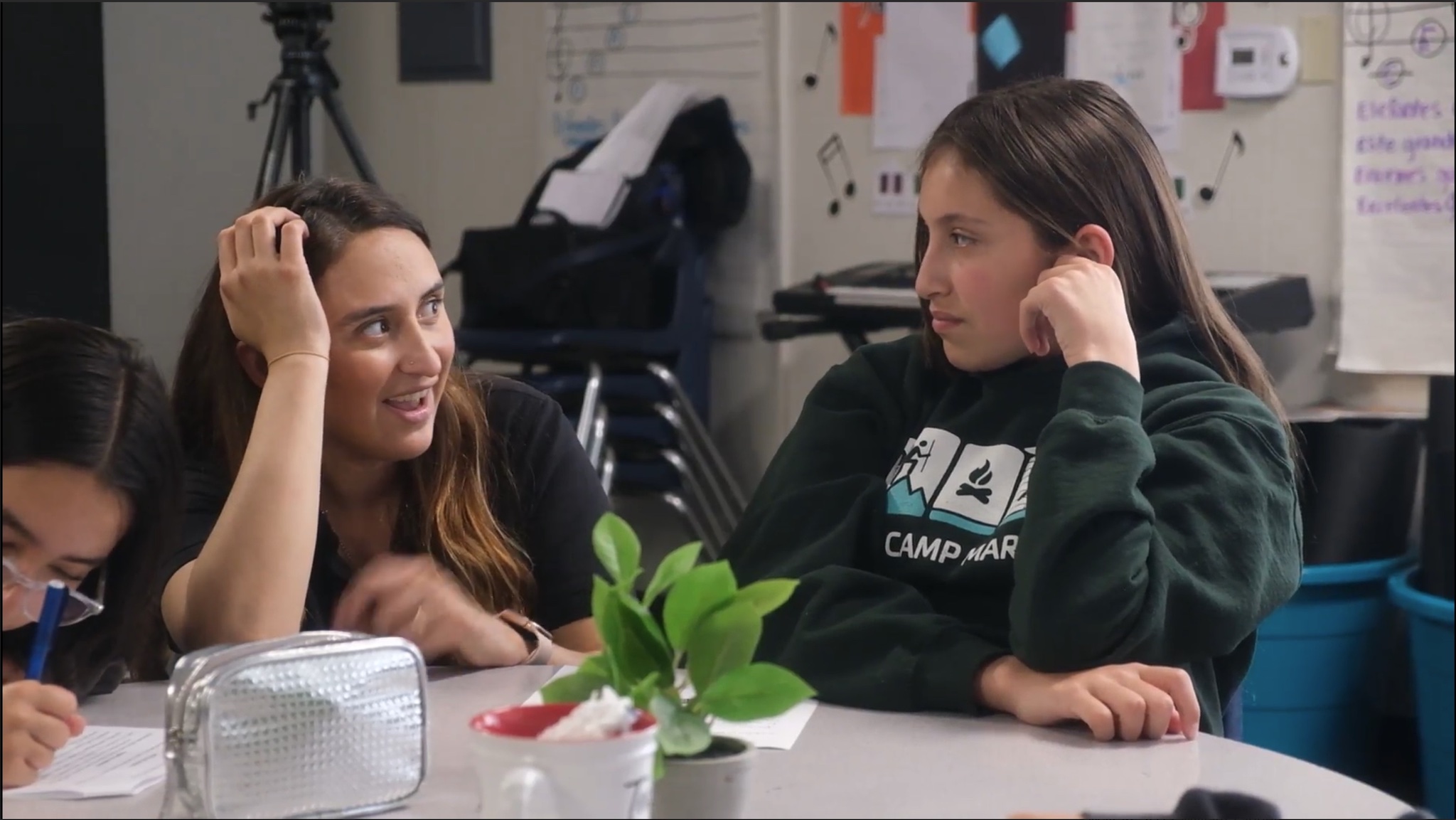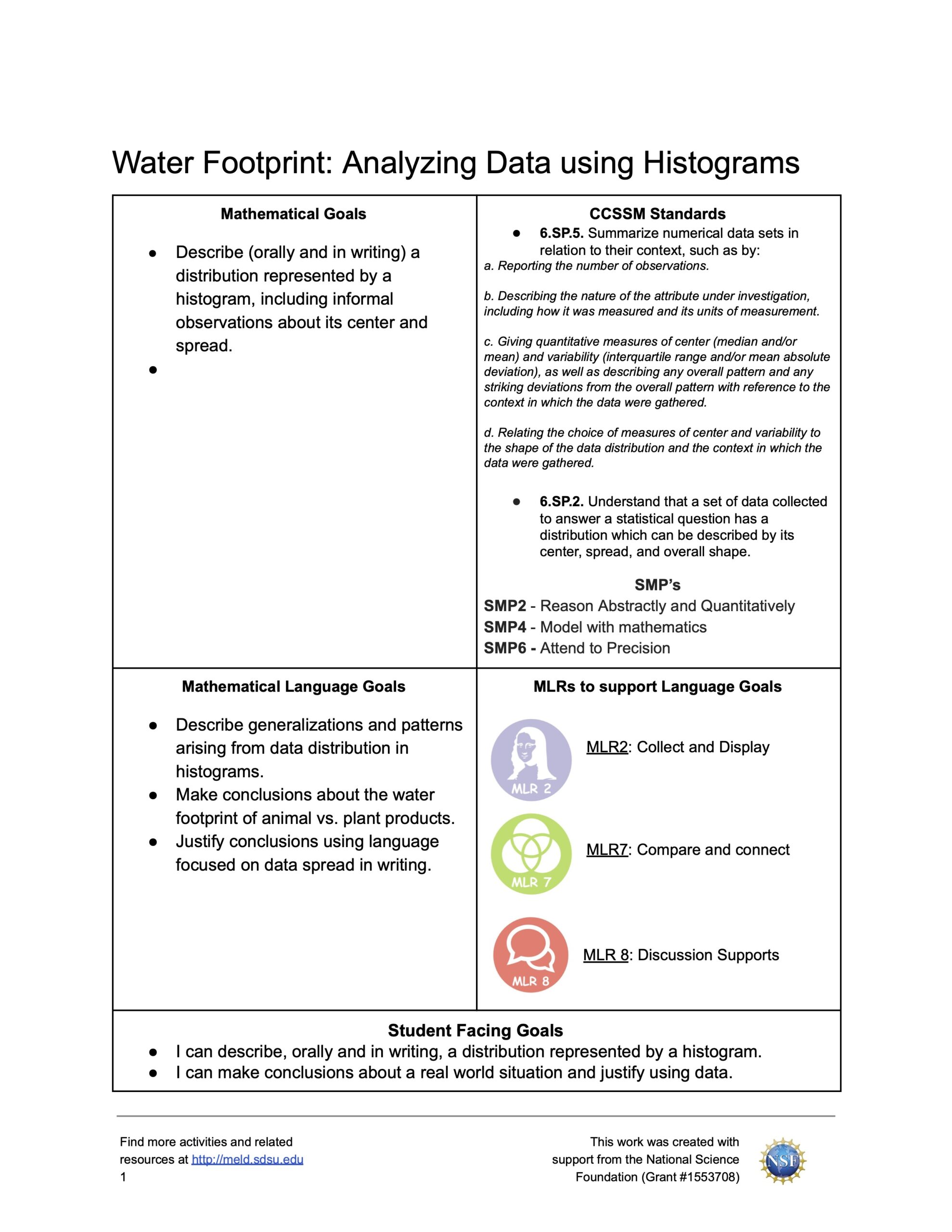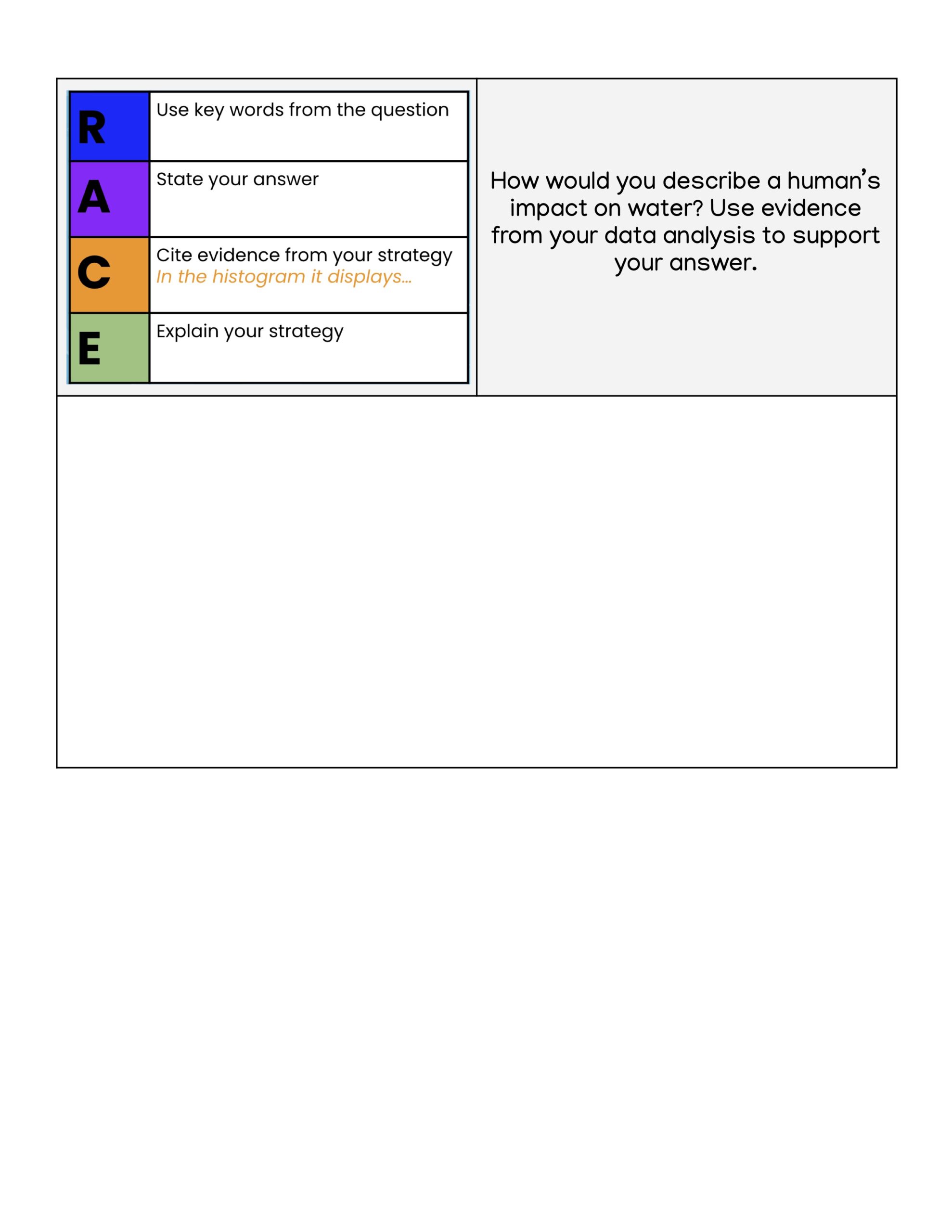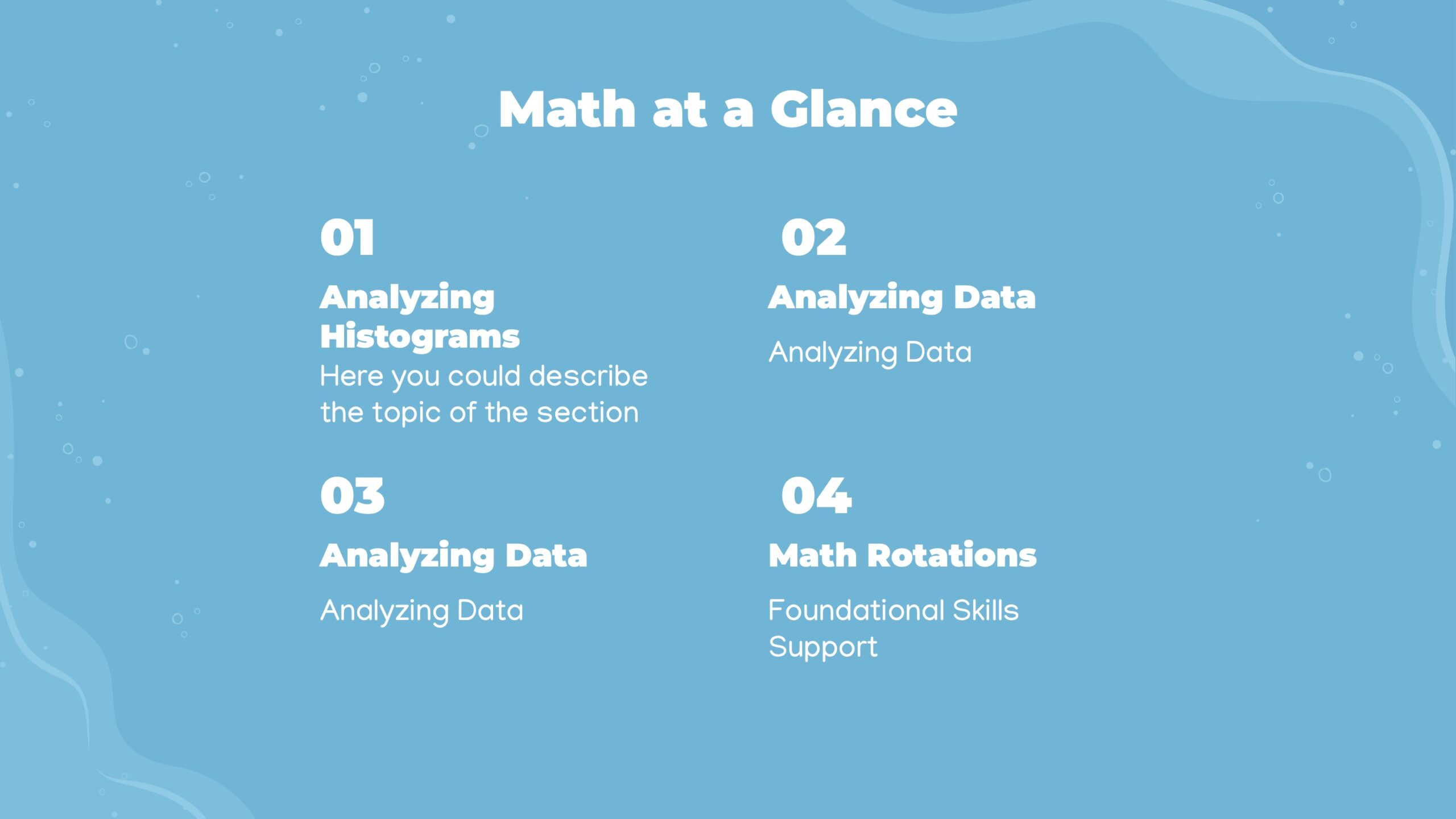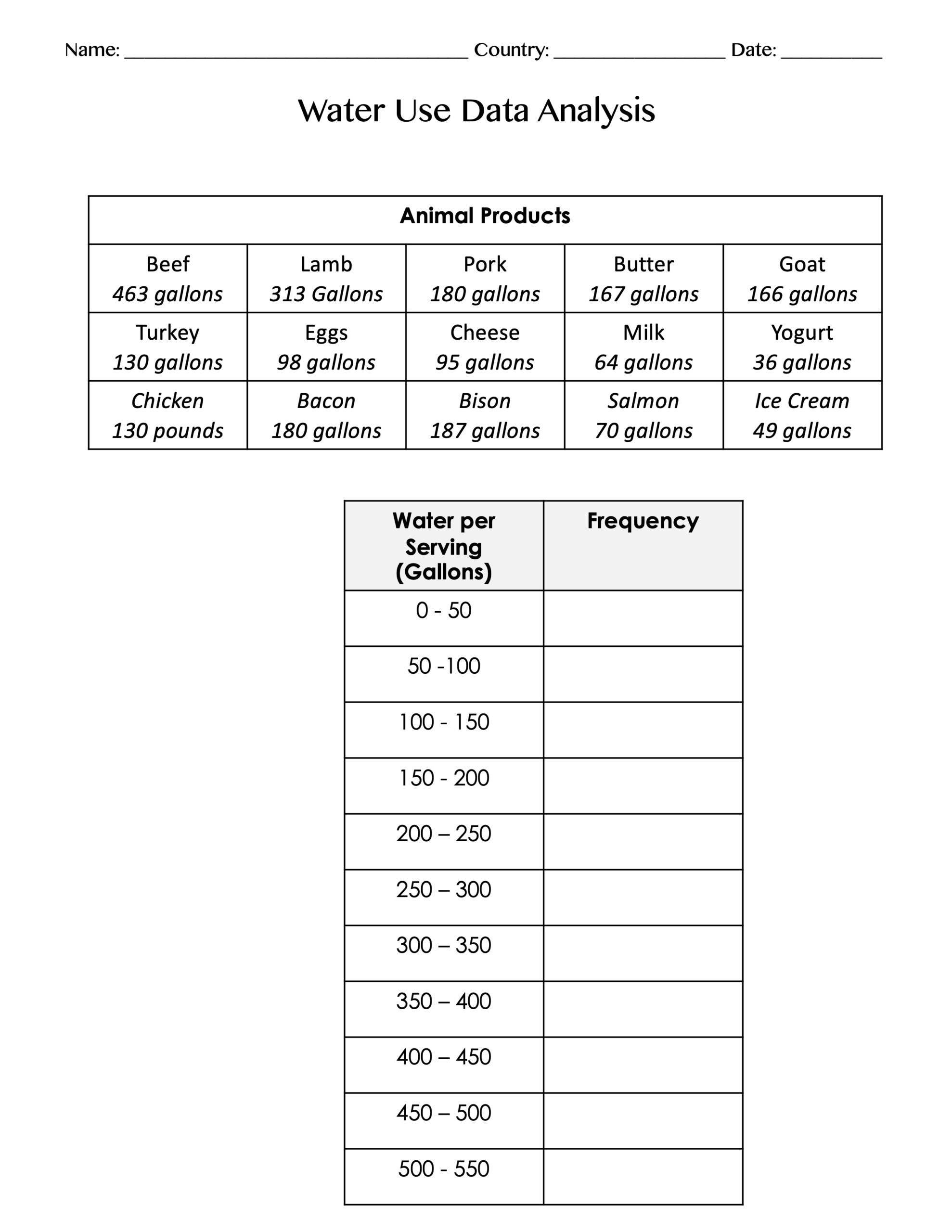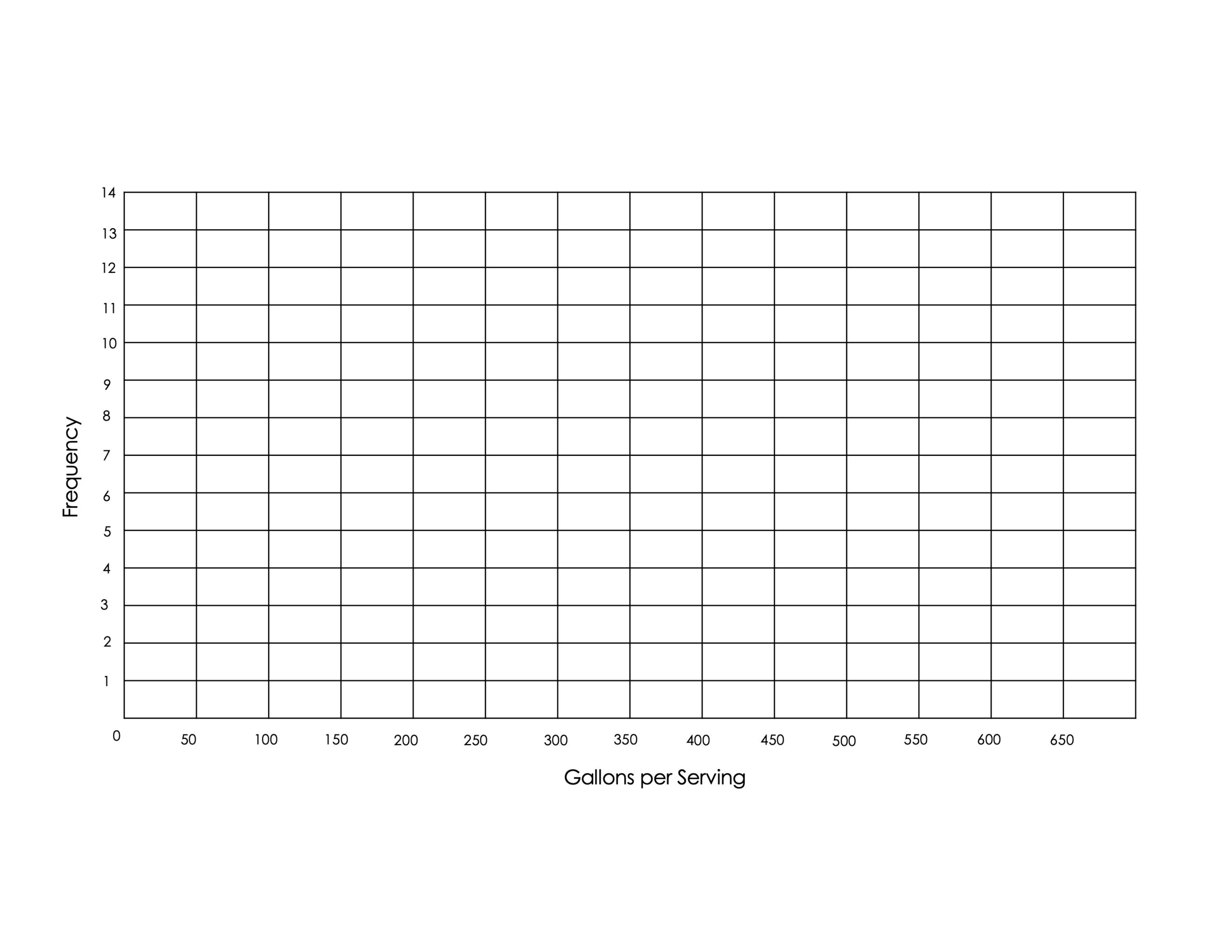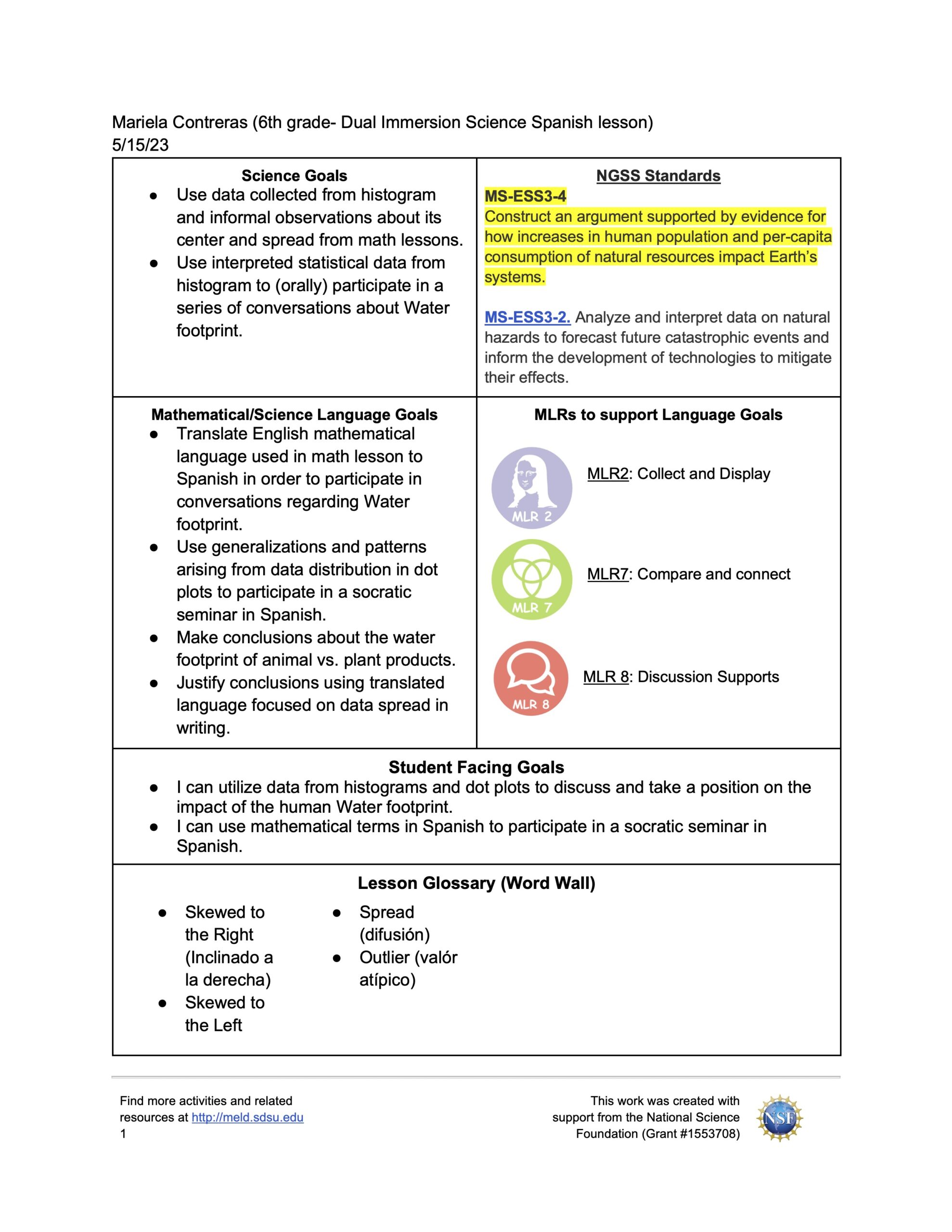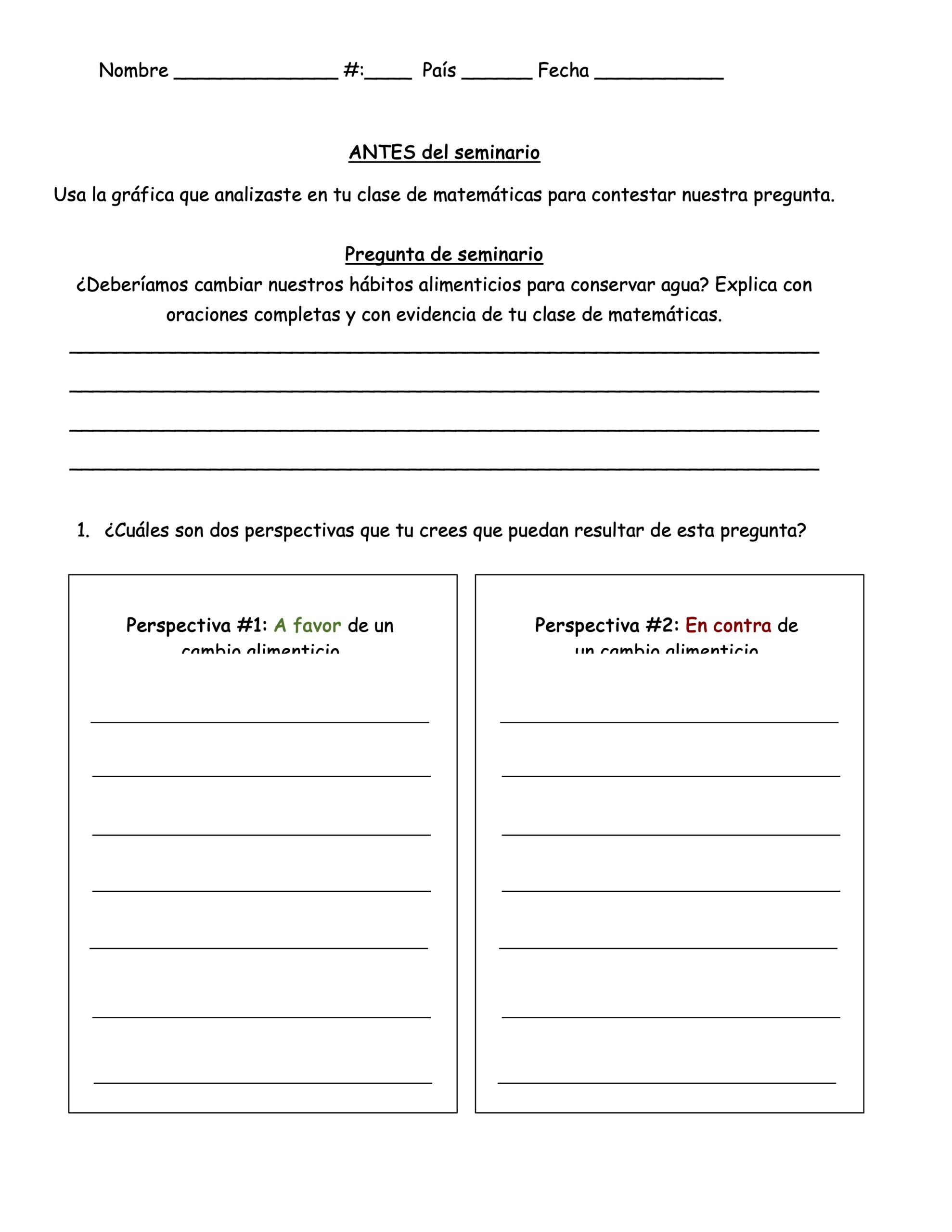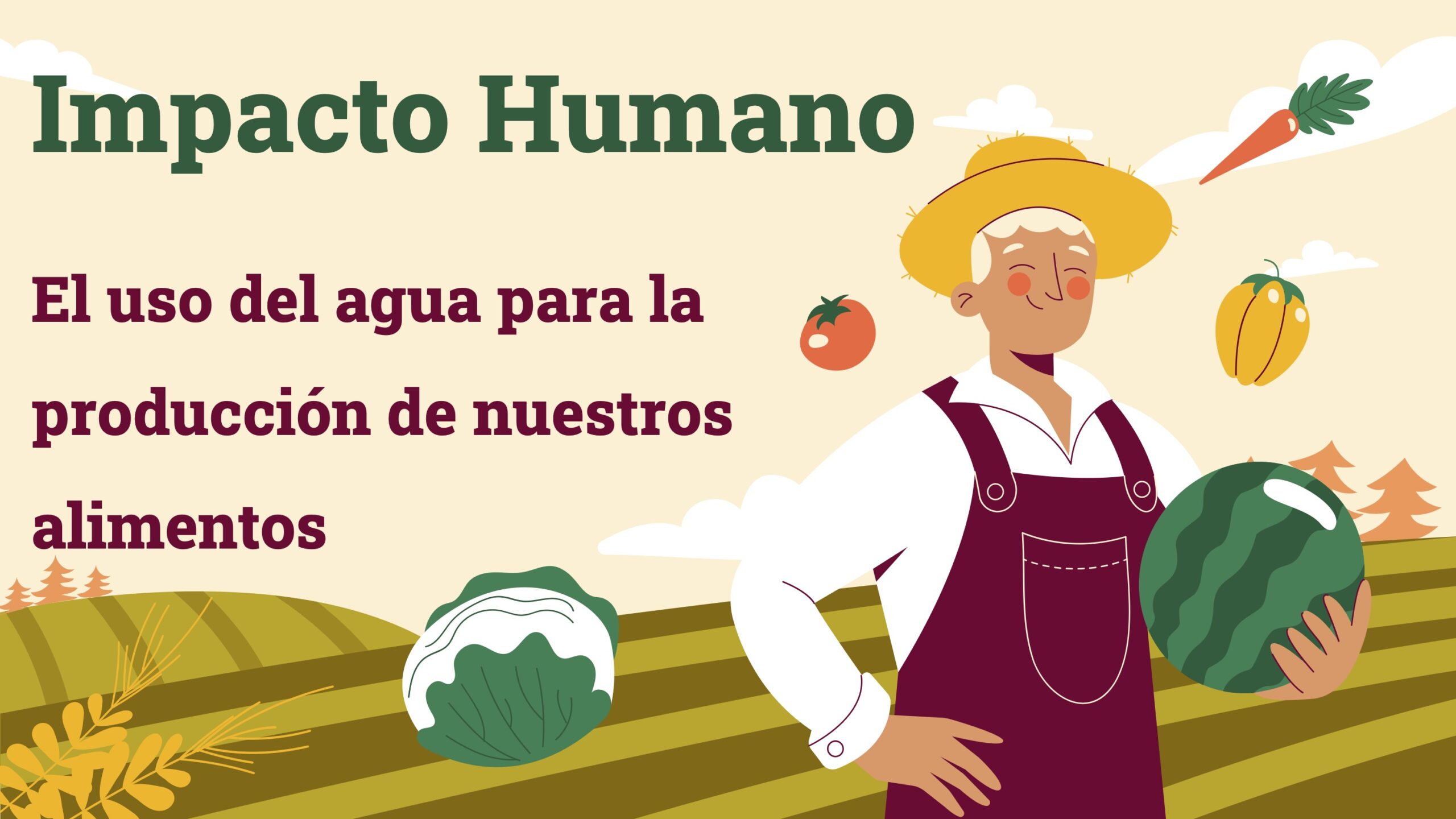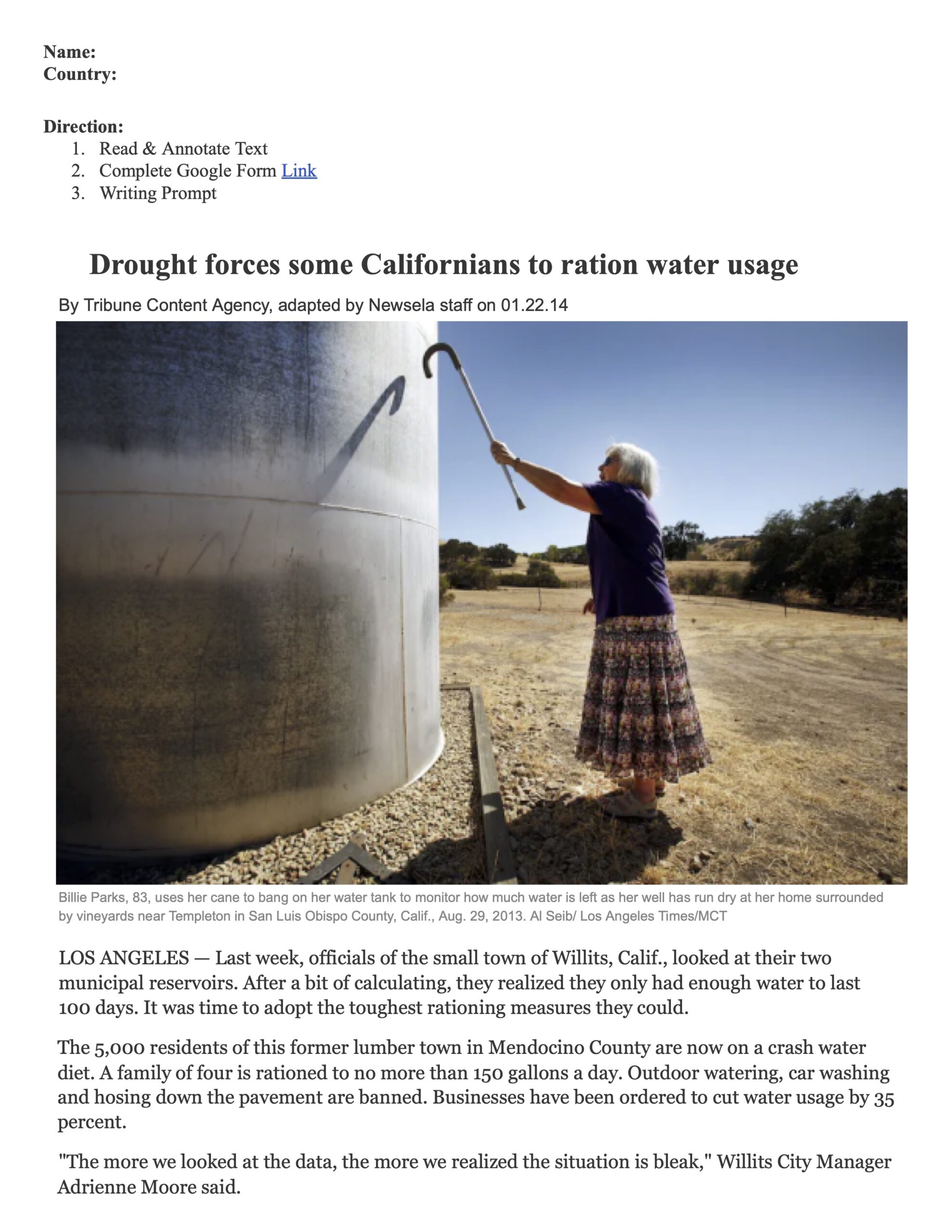Reasoning about Variability and Distributions
In this case, we see Karina Makela and Mariela Contreras from Chula Vista Learning Community Charter teach a two-day lesson on reasoning with data and representation. Karina focused on mathematics while Mariela, teaching in Spanish, focused on science.
Mathematics
What is the context for this lesson?
This lesson is part of a unit on statistics in the 6th grade mathematics curriculum. The lesson is also integrated with the sixth grade science standards, which focused on humans’ impact on the environment. The math lesson addressed the following Common Core Mathematics Standards:
6.SP.B Summarize and describe distributions.
6.SP.B.4 Display numerical data in plots on a number line, including dot plots, histograms, and box plots.
How are scaffolds embedded throughout the lesson and unit to support learning?
The lesson included the Math Language Routine Collect and Display to scaffold students’ language development, building from students’ personal meanings to disciplinary meanings. During the writing section of the lesson, the teacher also used a writing scaffold called “R.A.C.E.” that guided students on the format of a well-formed written response.
What makes this lesson culturally and linguistically responsive?
The mathematics teacher worked with the science teacher to select the contextual topic of this lesson. The teachers changed a problem about comparing the heights of baseball players and basketball players to comparing the amount of water used to create one serving of food, comparing plant based foods and animal based foods. This choice of context was intended to be linguistically and culturally responsive because the students were studying human impact on the environment in their other classes, including science.
Science
What is the context for this lesson?
This lesson was part of a 6th-grade unit on human impact on the environment. The middle science teacher collaborated and co-planned with the middle school math teacher. The science lesson objective was to help students take a stance (either for or against) on changing human diets to reduce the impact on the environment. To support their argument, students cited evidence from their statistics analysis (in their math class the day before).
MS-ESS3-4: Construct an argument supported by evidence for how increases in human population and per-capita consumption of natural resources impact Earth’s systems.
How are scaffolds embedded throughout the lesson and unit to support learning?
The teacher prepared the class for the seminar with guiding questions. During the seminar, students use sentence starters that allow them to do things with language like express an opinion, ask for clarification, and add to a classmate’s ideas.
What makes this lesson culturally and linguistically responsive?
In the Socratic seminar, which was conducted in Spanish, students gave evidence related to their lived experiences and cultural backgrounds. In advocating for or against changing human habits, they addressed how families of their cultural backgrounds address (or not) human impact on water.
Lesson Materials
Day 1: Math
Lesson Materials
Day 2: Science
